The evolution of media: on punch cards, magnetic tapes and floppy disks
 Bashny.Net
Bashny.Net
Hello, Geektimes! Usually in our blog we talk about new products and technology from OCZ. Today, however, we will focus on how the storage technology evolved throughout the history of their existence, which goes back more than 200 years.

Our story begins, of course, with punch cards. Many people mistakenly believe that the punch cards are the opening of the XX century, however, it is not. First punch cards have appeared at the beginning of the XIX century and were used in the weaving machine, created by French inventor Joseph Marie Jacquard.

So, what Jacquard invented. In the XIX century the production of cloth is a rather time-consuming process, but in essence it was a constant repetition of the same action. With the backing of extensive experience as a setup man machines, jacquard thought, why not automate this process.
The fruit of his work was the system that uses large solid plates, which have been carried out several rows of holes. These plates were the first in the world of punched cards. In fairness it should be noted that the Jacquard still not been an innovator in this field. French weavers inventors Basile Bouchon and Jacques Vaucanson also tried to use the tapes in their holed looms, but could not finish the job.
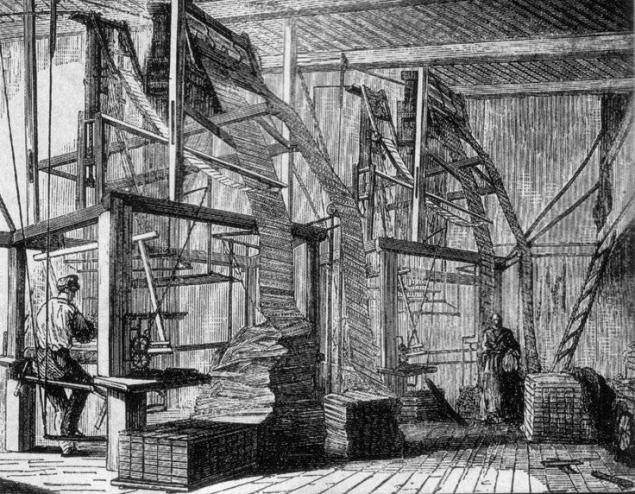
The principle of Jacquard machines lay in the fact that the entrance to the reading device, which is a set of probes associated with rods yarns fed punch cards. When passing through the perforated tape reader probes failed to hole, lifting up the corresponding thread. So a certain combination of holes punched card can retrieve pattern on fabric.
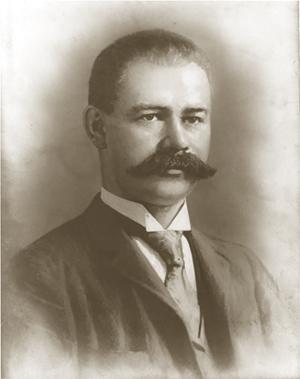
Punch cards are also central in the inventions of the American engineer Herman Hollerith, who in 1890 created a tab - a device designed for the treatment of alphabetic, numeric characters recorded on the card, and display the result on a paper tape. At first tabulator Hollerith used the US Census Bureau, and later took up the system in the railway administration and the government. By the way, in 1896 Hollerith founded the Tabulating Machine Company, which in 1911 became part of the conglomerate CTR, which in turn in 1924 was renamed to IBM.
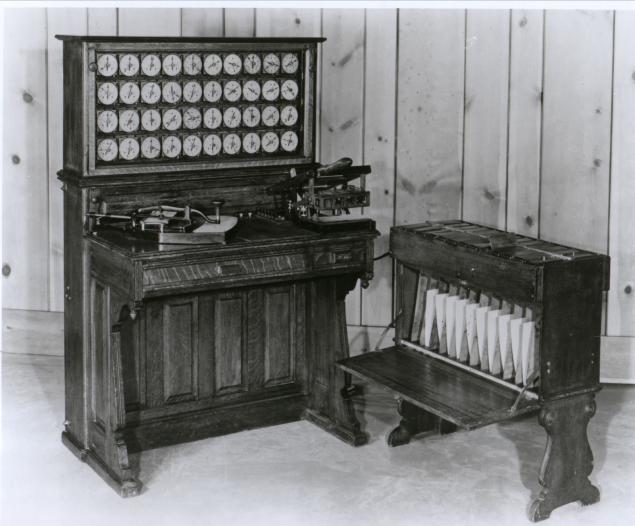
The main advantage of punched cards was the simplicity and ease of data manipulation. At any point of the deck you can add or remove the card, as well as easy to replace one other card. But there were some minuses, which over time have begun to outweigh the advantages. First of all, this is a small container. As a rule, card holds up to only 80 characters. This means that for 1 MB of data storage would require about 10 thousand punched cards. Also punched cards was characterized by low-speed reading and writing. Even the fastest readers are not treated more than a thousand punched cards per minute, which corresponds to about 1, 6 Kbytes / min. And, of course, reliability. Hurt made of thin cardboard punched card or do extra hole was easy.
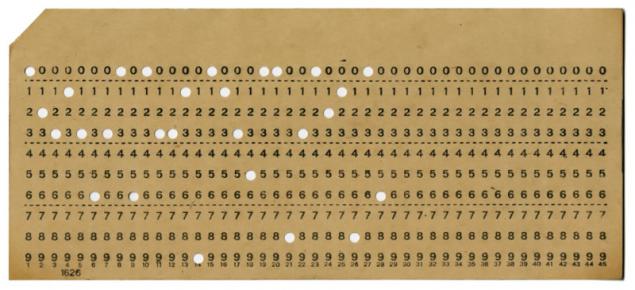
The peak of punched cards was in the middle of the XX century, and the sunset era came in 1980 when they were replaced by more advanced magnetic media.
The first magnetic film was created in 1928 by the German scientist Fritz Pflyumerom. This film is a thin paper, which was covered with a thin layer of iron oxide. In the same year he showed Pflyumer device for magnetic recording on a tape. When recording information on the film affects the magnetic field, and on its surface remained magnetization.
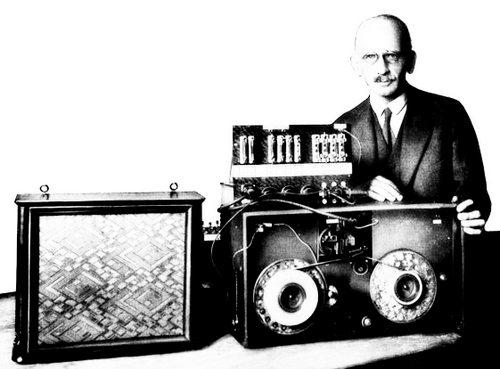
The first commercial computer that came with a tape was UNIVAC-I, released in 1951. In comparison with the punch cards, magnetic film UNIVAC-I was much more spacious - it could fit about 1 MB of data.

As the main data store tapes used before the 1980s. During this period, they are installed in mainframes and mini-computers. With the advent of hard drives tape was assigned the role of backup data. In the 2000s, repeatedly expressed the opinion that soon magnetic films ultimately go to bed. Since 2008, the market tape decreased on average by 14% per year. However, the situation changed dramatically in 2011, when Thailand, which were located huge production capacity hard drive manufacturers, has been hit by the floods. Because of the disaster HDD production volumes have dropped significantly, and the price of products increased by 20-60%. As a result, the tape found a second life.
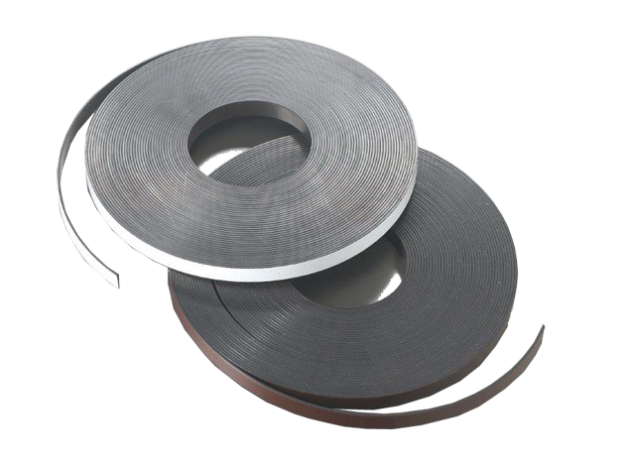
Real tape drives supported more by the fact that these storage devices are still less expensive than today's hard drives. According Evangelos Eleftheriou, head of storage technology IBM Research Laboratory in Zurich, 1 GB tape costs about 4 cents, whereas 1 GB of disk space on the HDD cost at least 2, 5 times more - 10 cents. For this reason, the selection in favor of making the magnetic film, for example, major research laboratories, where there is a need to store huge amounts of information. For example, to store the results of the Large Hadron Collider is used magnetic tape. To store 28 petabytes of data on the hard disk organization CERN, responsible for the establishment and operation of the collider would have to fork out more than $ 38 million. While keeping the same amount of information on the magnetic tape cost them only 1, 5 million.

According to the department of processing and storage CERN Alberto Pace, in addition to cheap, have the tape has several advantages over hard drives. Firstly, it is reliable. In case of breaking the tape it is always possible to stick together, while losing only a few hundred megabytes danyh. A failure at the hard disk is likely to be lost, all information. Second, this access speed. The robot, which selects the desired tape and inserts it in the reader, it takes about 40 seconds to perform this operation. But even that is about 4 times faster than if the data had to be read from the hard disk. Third, the life of the tape is 30 years or more, while hard drives can operate for only 5 years.
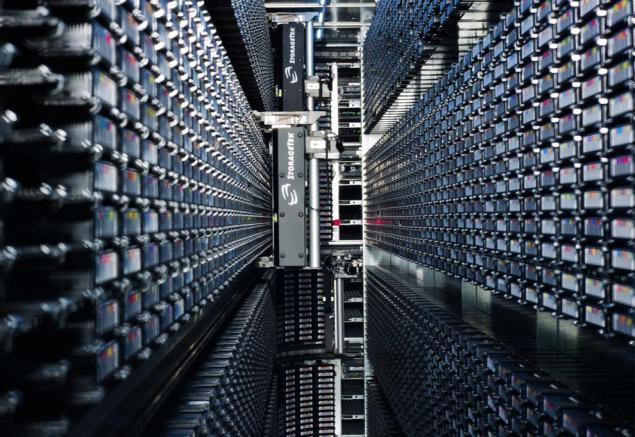
Alberto Pace highlighted another important plus tape - their safety. In theory, hackers can gain access to the hard drives, while online access to the magnetic tape can not be obtained.
The next step in the evolution of media has become floppy. It was published in 1971, and its development was engaged by IBM. History of the floppy is quite simple: IBM before the question arose of how to distribute software updates to its customers, and engineer Alan Shugart proposed the idea of a quick and compact floppy disk. The first floppy disk was performed in 8-inch form factor and had a volume of 80 KB. Only supports one-time recording. Interestingly, the original design did not include a floppy disk to all of us usual plastic casing - IBM was planning to supply a floppy disk, without any protection. However, in such a floppy attract dust, in addition, it can easily be damaged. So we decided to drive to pack in a plastic case.

In fact, the first floppy disk is not popular. The reason for this is that the cost of the drives are required for reading disks used almost exceeds the value of the whole computer.
Shugart and IBM engineers continued to work on improving his brainchild. In 1973, the volume of floppy disks has been increased to 256 KB, and in 1975 he became even 4 times more. But the main task Shugart is not so much an increase in the memory capacity floppy disks, as a decrease in its size. Originally conceived as a floppy handheld device, but an 8-inch device could fit only in a mid-size travel bag.

And in 1976 there was 5 format, 25 inches. It should be noted that this standard was developed based company Shugart Shugart Associates in close collaboration with Wang Laboratories, which had planned to use a smaller format in its desktop computers. Why 5, 25 & quot ;? When the An Wang of Wang Laboratories with Jim Adkisson and Don Massaro of Shugart Associates to discuss the future form factor at the bar, their attention was drawn to an ordinary cloth. Thus was born the idea to create a floppy disk with such dimensions. It is called mini-floppy.
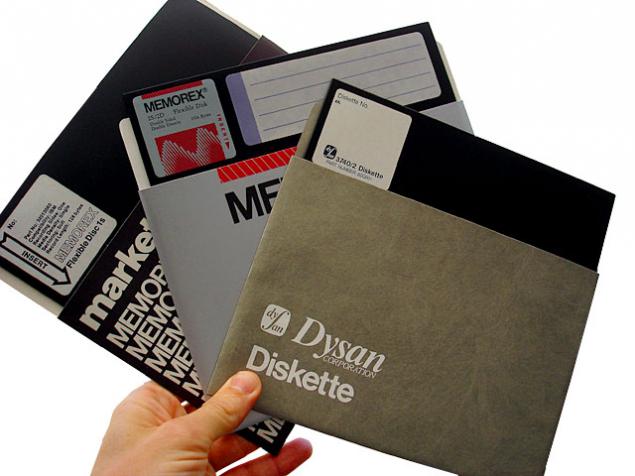
Habit 3, 5-inch format diskette received in 1981. Creator of the format was the company Sony. The first 3, 5 & quot; floppy disks had a volume of 720 Kbytes, but soon will be a model that can accommodate 1, 44 MB of information. But by the mid-90s even this amount has already been enough. However diskette for a long time kept on the media market, and only with the advent of affordable disk drives based on flash memory began to take their positions.
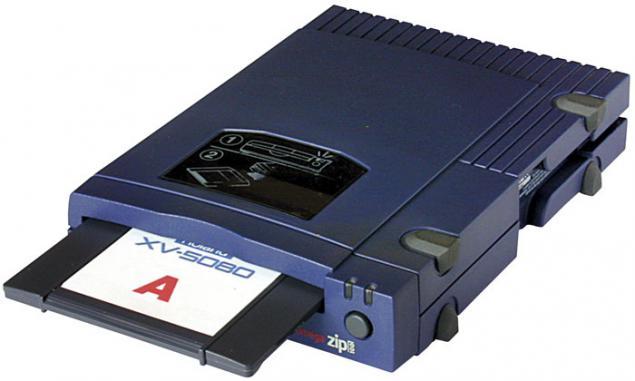
Despite all the advantages "flash drives" of floppy disks, some manufacturers have attempted to save the aging standard. So, Iomega has developed a floppy disk called Iomega Zip, which is characterized by the classic floppy increased up to 100 MB of memory and a high-speed reading and writing. But due to the high cost and reliability issues Iomega Zip and could not press on the market either 3, 5 & quot; floppy disks or drives based on flash memory.
(To be continued ...) i>
Source: geektimes.ru/company/ocz/blog/264372/

Our story begins, of course, with punch cards. Many people mistakenly believe that the punch cards are the opening of the XX century, however, it is not. First punch cards have appeared at the beginning of the XIX century and were used in the weaving machine, created by French inventor Joseph Marie Jacquard.

So, what Jacquard invented. In the XIX century the production of cloth is a rather time-consuming process, but in essence it was a constant repetition of the same action. With the backing of extensive experience as a setup man machines, jacquard thought, why not automate this process.
The fruit of his work was the system that uses large solid plates, which have been carried out several rows of holes. These plates were the first in the world of punched cards. In fairness it should be noted that the Jacquard still not been an innovator in this field. French weavers inventors Basile Bouchon and Jacques Vaucanson also tried to use the tapes in their holed looms, but could not finish the job.

The principle of Jacquard machines lay in the fact that the entrance to the reading device, which is a set of probes associated with rods yarns fed punch cards. When passing through the perforated tape reader probes failed to hole, lifting up the corresponding thread. So a certain combination of holes punched card can retrieve pattern on fabric.

Punch cards are also central in the inventions of the American engineer Herman Hollerith, who in 1890 created a tab - a device designed for the treatment of alphabetic, numeric characters recorded on the card, and display the result on a paper tape. At first tabulator Hollerith used the US Census Bureau, and later took up the system in the railway administration and the government. By the way, in 1896 Hollerith founded the Tabulating Machine Company, which in 1911 became part of the conglomerate CTR, which in turn in 1924 was renamed to IBM.

The main advantage of punched cards was the simplicity and ease of data manipulation. At any point of the deck you can add or remove the card, as well as easy to replace one other card. But there were some minuses, which over time have begun to outweigh the advantages. First of all, this is a small container. As a rule, card holds up to only 80 characters. This means that for 1 MB of data storage would require about 10 thousand punched cards. Also punched cards was characterized by low-speed reading and writing. Even the fastest readers are not treated more than a thousand punched cards per minute, which corresponds to about 1, 6 Kbytes / min. And, of course, reliability. Hurt made of thin cardboard punched card or do extra hole was easy.

The peak of punched cards was in the middle of the XX century, and the sunset era came in 1980 when they were replaced by more advanced magnetic media.
The first magnetic film was created in 1928 by the German scientist Fritz Pflyumerom. This film is a thin paper, which was covered with a thin layer of iron oxide. In the same year he showed Pflyumer device for magnetic recording on a tape. When recording information on the film affects the magnetic field, and on its surface remained magnetization.

The first commercial computer that came with a tape was UNIVAC-I, released in 1951. In comparison with the punch cards, magnetic film UNIVAC-I was much more spacious - it could fit about 1 MB of data.

As the main data store tapes used before the 1980s. During this period, they are installed in mainframes and mini-computers. With the advent of hard drives tape was assigned the role of backup data. In the 2000s, repeatedly expressed the opinion that soon magnetic films ultimately go to bed. Since 2008, the market tape decreased on average by 14% per year. However, the situation changed dramatically in 2011, when Thailand, which were located huge production capacity hard drive manufacturers, has been hit by the floods. Because of the disaster HDD production volumes have dropped significantly, and the price of products increased by 20-60%. As a result, the tape found a second life.

Real tape drives supported more by the fact that these storage devices are still less expensive than today's hard drives. According Evangelos Eleftheriou, head of storage technology IBM Research Laboratory in Zurich, 1 GB tape costs about 4 cents, whereas 1 GB of disk space on the HDD cost at least 2, 5 times more - 10 cents. For this reason, the selection in favor of making the magnetic film, for example, major research laboratories, where there is a need to store huge amounts of information. For example, to store the results of the Large Hadron Collider is used magnetic tape. To store 28 petabytes of data on the hard disk organization CERN, responsible for the establishment and operation of the collider would have to fork out more than $ 38 million. While keeping the same amount of information on the magnetic tape cost them only 1, 5 million.

According to the department of processing and storage CERN Alberto Pace, in addition to cheap, have the tape has several advantages over hard drives. Firstly, it is reliable. In case of breaking the tape it is always possible to stick together, while losing only a few hundred megabytes danyh. A failure at the hard disk is likely to be lost, all information. Second, this access speed. The robot, which selects the desired tape and inserts it in the reader, it takes about 40 seconds to perform this operation. But even that is about 4 times faster than if the data had to be read from the hard disk. Third, the life of the tape is 30 years or more, while hard drives can operate for only 5 years.

Alberto Pace highlighted another important plus tape - their safety. In theory, hackers can gain access to the hard drives, while online access to the magnetic tape can not be obtained.
The next step in the evolution of media has become floppy. It was published in 1971, and its development was engaged by IBM. History of the floppy is quite simple: IBM before the question arose of how to distribute software updates to its customers, and engineer Alan Shugart proposed the idea of a quick and compact floppy disk. The first floppy disk was performed in 8-inch form factor and had a volume of 80 KB. Only supports one-time recording. Interestingly, the original design did not include a floppy disk to all of us usual plastic casing - IBM was planning to supply a floppy disk, without any protection. However, in such a floppy attract dust, in addition, it can easily be damaged. So we decided to drive to pack in a plastic case.

In fact, the first floppy disk is not popular. The reason for this is that the cost of the drives are required for reading disks used almost exceeds the value of the whole computer.
Shugart and IBM engineers continued to work on improving his brainchild. In 1973, the volume of floppy disks has been increased to 256 KB, and in 1975 he became even 4 times more. But the main task Shugart is not so much an increase in the memory capacity floppy disks, as a decrease in its size. Originally conceived as a floppy handheld device, but an 8-inch device could fit only in a mid-size travel bag.

And in 1976 there was 5 format, 25 inches. It should be noted that this standard was developed based company Shugart Shugart Associates in close collaboration with Wang Laboratories, which had planned to use a smaller format in its desktop computers. Why 5, 25 & quot ;? When the An Wang of Wang Laboratories with Jim Adkisson and Don Massaro of Shugart Associates to discuss the future form factor at the bar, their attention was drawn to an ordinary cloth. Thus was born the idea to create a floppy disk with such dimensions. It is called mini-floppy.

Habit 3, 5-inch format diskette received in 1981. Creator of the format was the company Sony. The first 3, 5 & quot; floppy disks had a volume of 720 Kbytes, but soon will be a model that can accommodate 1, 44 MB of information. But by the mid-90s even this amount has already been enough. However diskette for a long time kept on the media market, and only with the advent of affordable disk drives based on flash memory began to take their positions.

Despite all the advantages "flash drives" of floppy disks, some manufacturers have attempted to save the aging standard. So, Iomega has developed a floppy disk called Iomega Zip, which is characterized by the classic floppy increased up to 100 MB of memory and a high-speed reading and writing. But due to the high cost and reliability issues Iomega Zip and could not press on the market either 3, 5 & quot; floppy disks or drives based on flash memory.
(To be continued ...) i>
Source: geektimes.ru/company/ocz/blog/264372/
Tags
See also
Yamantau-Secret City Government
The history information storage (19 photos)
The carrier 360 terabytes
They no longer exist
Museum of the history of computing
Summary of the Soviet space exploration, types of rockets and the most significant victories in this field. Part 2
Forgotten Drives
Evolution of Communication
Scientists recover photos from polar weather satellite 60s

















